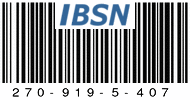Divisional Napoleon's Battles or 'A heresy. Part 2'
The fire problem
In NB, the so-called infantry fire of the Fire Phase is a combination of the fire of both skirmishing infantry and light divisional guns. That combination is abstracted and neither skirmish infantry nor divisional artillery are represented in the tabletop. However, the use of a bigger terrain scale in NBd implies the use of 'real' divisional gun models and skirmish figures.
Divisional guns can be represented and treated in a similar way to NB heavy and horse 'normal' batteries: they will fire during the Fire Phase and, like normal combat units, will need to be in command in order to move or change formation. Divisional guns can be commanded by their divisional (or brigade) commander applying the habitual NB command rules. No modification is needed beyond their inclusion in the OOB's.
The skirmish screen extended from the main firing line until a distance of 100 or 500 yards depending on the skirmish ability of the troops. In NBd, skirmishing figures will be placed on the tabletop scattered into the fire area of the brigade, i.e. from the base front of their accompanying formed infantry until a distance of 4-20 inches or 10-50 cm. However, in no case they can enter in contact (touch) with enemy formed units. The skirmishers can be represented by normal infantry bases scattered in a similar way to the NB open order or by special open order bases.
The real effect of the skirmish fire is (and was at that time) an arguable matter. The number of resulting casualties was small and the main achievement of skirmishers was to disorder enemy formed units whereas simultaneously protecting the own from the enemy. To model the effects of skirmishing at divisional scale, I'll try one of the solutions pointed in my Modifications of Napoleon's Battles page. These skirmish house-rules (discused in the Yahoo napbattles group were used in my NB Scenarios for the Peninsular War (see the link for Scenarios at righ menu) and arosen from the need to discount the effect of divisional guns. The possibilites can be summarized as:
1) Use an additional negative modifier (“-3”?) to Infantry Fire Factors, OR
2) Modify the ‘Resolving Fire’ Rule so a ‘two losses’ result is converted to ‘one loss’ and a ‘one loss’ is a miss, OR
3) Carry out the infantry fire as usual without any modifier. The resulting losses are not marked on the target unit, but are only used to cause disorder
The last option can be discouraging: too many die-rolling for nothing! and the first one will need further research to find the optimum factor so initially I'll use the second: A ‘two losses’ result is converted to ‘one loss’ and a ‘one loss’ is a miss and the disorder in the target unit is assigned as usual.
All above considerations also apply to cavalry skirmishers.
Next time about command radii, casualties and changes of formation


































No comments:
Post a Comment